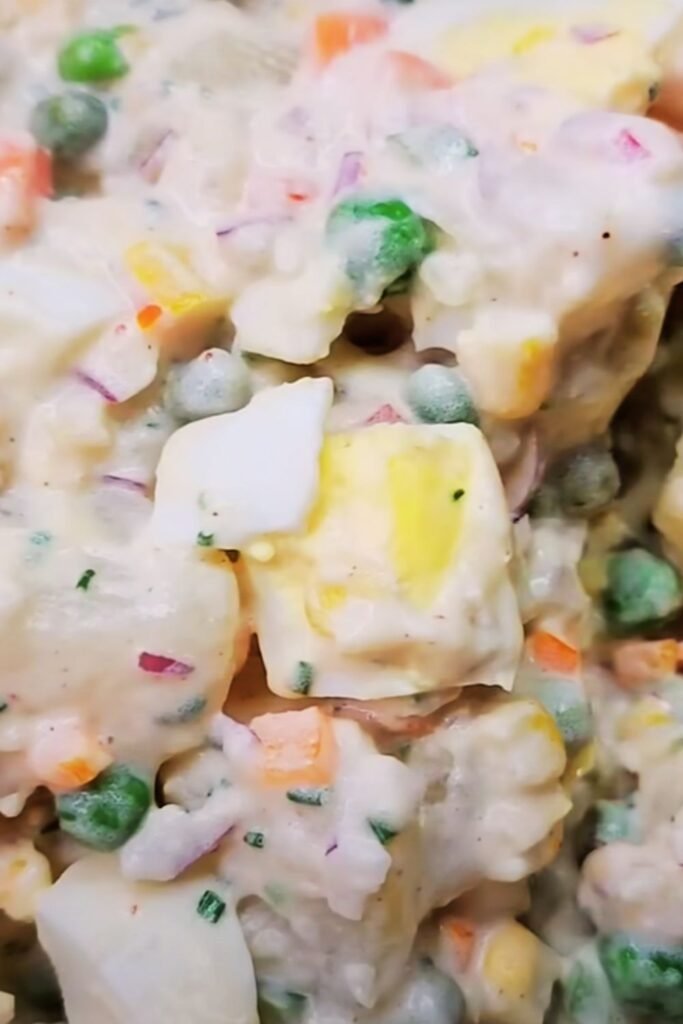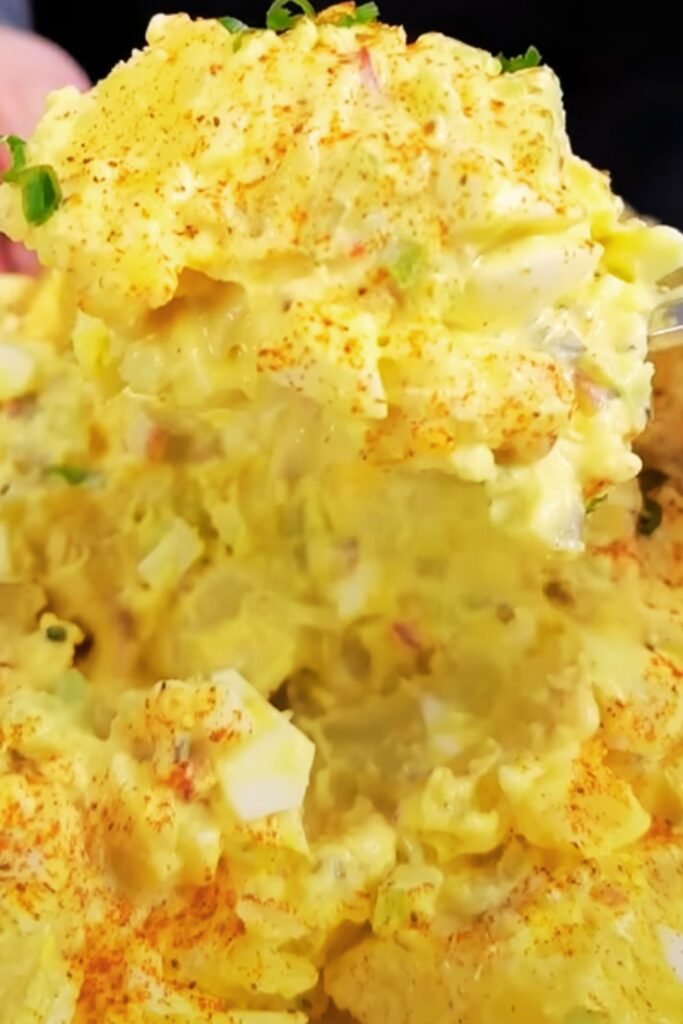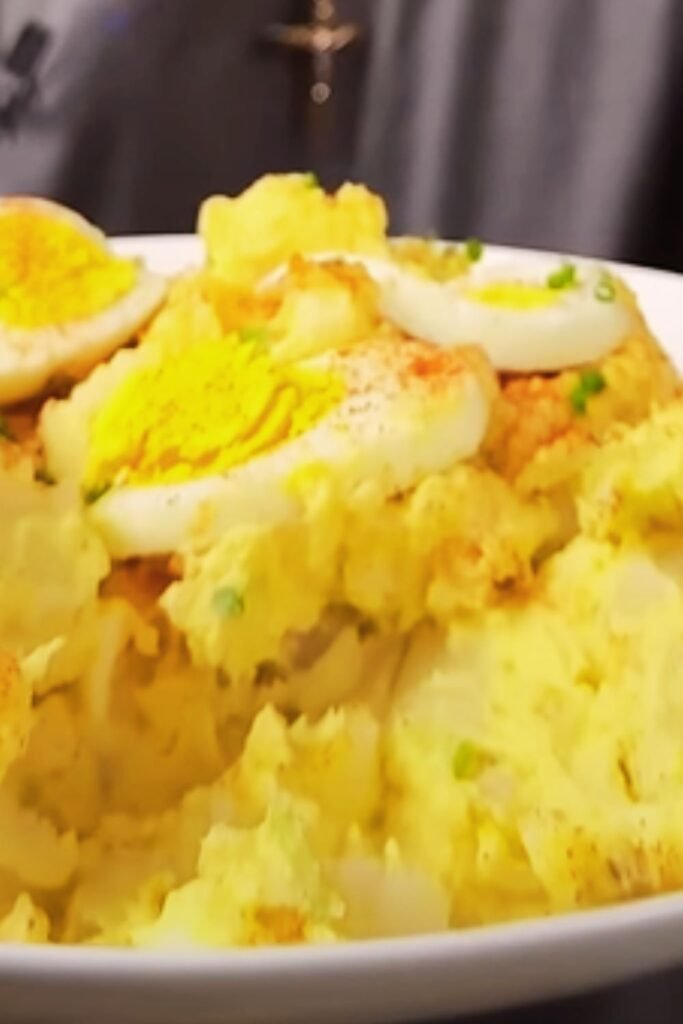There’s something magical about a well-made potato salad that instantly transports me back to summer picnics, family gatherings, and backyard barbecues. I’ve spent years perfecting my classic potato salad recipe, and I’m excited to share everything I’ve learned with you. This isn’t just another potato salad – it’s the potato salad that will have your guests asking for the recipe every single time.
The beauty of classic potato salad lies in its simplicity, yet achieving that perfect balance of creamy dressing, tender potatoes, and complementary flavors requires attention to detail. I’ve made countless batches over the years, experimenting with different potato varieties, dressing ratios, and preparation techniques to bring you this definitive guide.
Understanding the Foundation: Choosing Your Potatoes
The heart of any exceptional potato salad starts with selecting the right potatoes. Not all potatoes are created equal when it comes to salad-making, and I’ve learned this lesson through trial and error.
Waxy Potatoes: The Champions
- Red potatoes
- Yukon Gold potatoes
- New potatoes
- Fingerling potatoes
Starchy Potatoes: The Avoid List
- Russet potatoes
- Idaho potatoes
- Baking potatoes
Waxy potatoes contain less starch and more moisture, which means they hold their shape beautifully after cooking. When I first started making potato salad, I made the mistake of using russet potatoes, and my salad turned into a mushy mess. The waxy varieties maintain their structure while absorbing just enough dressing to be flavorful without falling apart.
My Classic Potato Salad Recipe
Ingredients
| Ingredient | Amount | Purpose |
|---|---|---|
| Red or Yukon Gold potatoes | 3 pounds | Main base |
| Large eggs | 6 | Protein and richness |
| Mayonnaise | 1 cup | Primary binding agent |
| Yellow mustard | 2 tablespoons | Tangy flavor enhancer |
| Sweet pickle relish | 1/3 cup | Sweetness and texture |
| White onion, finely diced | 1/2 medium | Sharp flavor contrast |
| Celery, diced | 2 stalks | Crunch and freshness |
| Fresh chives, chopped | 1/4 cup | Mild onion flavor |
| Salt | 1 teaspoon | Flavor enhancement |
| Black pepper | 1/2 teaspoon | Spice balance |
| Paprika | 1/2 teaspoon | Color and mild flavor |
| White vinegar | 1 tablespoon | Brightness and preservation |

Step-by-Step Preparation Method
Preparing the Potatoes:
- Wash the potatoes thoroughly but leave the skins on for added texture and nutrition
- Cut potatoes into uniform 1-inch cubes to ensure even cooking
- Place cubed potatoes in a large pot and cover with cold water by 2 inches
- Add 1 tablespoon of salt to the water – this seasons the potatoes from within
- Bring to a boil over high heat, then reduce to medium-high and cook for 12-15 minutes
- Test doneness with a fork – potatoes should be tender but still hold their shape
- Drain immediately and spread on a baking sheet to cool and prevent overcooking
Preparing the Hard-Boiled Eggs:
- Place eggs in a single layer in a saucepan
- Cover with cold water by 1 inch
- Bring to a rolling boil over high heat
- Remove from heat, cover, and let stand for 12 minutes
- Transfer eggs to an ice bath to stop cooking
- Peel when completely cool and chop into bite-sized pieces
Creating the Dressing:
- In a large mixing bowl, whisk together mayonnaise and mustard until smooth
- Add vinegar and whisk until well incorporated
- Season with salt, pepper, and paprika
- Taste and adjust seasonings as needed
Assembly Process:
- Add cooled potatoes to the dressing mixture
- Gently fold in chopped eggs, being careful not to break them up too much
- Add diced onion, celery, and pickle relish
- Sprinkle in fresh chives
- Fold everything together with a large spoon, using a gentle motion to avoid mashing the potatoes
- Cover and refrigerate for at least 2 hours before serving
Mastering the Perfect Texture and Flavor Balance
Creating the ideal potato salad texture requires understanding how each ingredient contributes to the overall experience. I’ve discovered that the secret lies in the preparation timing and ingredient ratios.
Texture Components Analysis
| Component | Texture Contribution | Preparation Key |
|---|---|---|
| Potatoes | Creamy foundation | Proper cooking time |
| Hard-boiled eggs | Rich, tender pieces | Perfect timing prevents rubber texture |
| Celery | Fresh crunch | Dice uniformly for consistent bite |
| Onions | Sharp bite | Fine dice prevents overwhelming pieces |
| Pickle relish | Tangy pop | Quality relish makes significant difference |
The dressing-to-solid ratio is crucial for achieving that perfect creamy consistency. I use approximately 1 cup of dressing base for every 3 pounds of potatoes, which provides adequate coating without making the salad soupy.

Advanced Techniques for Superior Results
Over the years, I’ve developed several techniques that elevate my potato salad from good to extraordinary. These methods might seem minor, but they make a significant difference in the final product.
Temperature Management: I always dress my potatoes while they’re still slightly warm. This allows the dressing to penetrate the potatoes more effectively, creating deeper flavor throughout each bite. However, I’m careful not to add mayonnaise-based dressing to hot potatoes, as this can cause the mayonnaise to separate.
Seasoning Layers: I season at multiple stages of preparation. First, I salt the cooking water for the potatoes. Then, I season the dressing base. Finally, I taste and adjust the seasoning of the completed salad. This layered approach ensures well-seasoned potatoes rather than just seasoned dressing.
Resting Time Importance: My potato salad always tastes better after resting in the refrigerator for several hours. This resting period allows flavors to meld and develop complexity. I typically prepare my potato salad the day before serving for optimal flavor development.
Nutritional Benefits and Considerations
Classic potato salad provides substantial nutritional value when prepared thoughtfully. Understanding the nutritional profile helps me make informed decisions about serving sizes and meal planning.
Nutritional Breakdown (Per 1-Cup Serving)
| Nutrient | Amount | % Daily Value |
|---|---|---|
| Calories | 285 | 14% |
| Total Fat | 18g | 28% |
| Saturated Fat | 3g | 15% |
| Cholesterol | 95mg | 32% |
| Sodium | 520mg | 23% |
| Total Carbohydrates | 26g | 9% |
| Dietary Fiber | 3g | 12% |
| Protein | 7g | 14% |
| Vitamin C | 12mg | 13% |
| Potassium | 485mg | 14% |
The potatoes provide complex carbohydrates and potassium, while eggs contribute high-quality protein and essential amino acids. The vegetables add fiber and various micronutrients. I find that this nutritional profile makes potato salad a satisfying side dish that contributes meaningfully to overall meal nutrition.
Variations and Customization Options
While I love my classic recipe, I understand that personal preferences vary. I’ve developed several successful variations that maintain the spirit of classic potato salad while accommodating different tastes and dietary needs.
German-Style Potato Salad Adaptation:
- Replace mayonnaise with a warm bacon and vinegar dressing
- Use fingerling potatoes for authenticity
- Add fresh herbs like parsley and dill
- Serve warm rather than chilled
Lighter Version Modifications:
- Substitute half the mayonnaise with Greek yogurt
- Reduce egg yolks and use more whites
- Increase vegetable content with additional celery and bell peppers
- Use low-fat mayonnaise without sacrificing too much flavor
Southern-Style Enhancements:
- Add sweet pickle juice to the dressing for extra tang
- Include chopped hard-boiled egg whites and yolks separately for visual appeal
- Incorporate a touch of sugar for subtle sweetness
- Garnish with additional paprika and fresh herbs

Storage Guidelines and Food Safety
Proper storage is essential for maintaining both food safety and quality. I’ve learned these practices through experience and food safety education.
Storage Best Practices
| Storage Method | Duration | Temperature | Notes |
|---|---|---|---|
| Refrigerated (covered) | 3-5 days | 40°F or below | Use airtight container |
| Room temperature | 2 hours maximum | Below 70°F | Discard after time limit |
| Freezing | Not recommended | N/A | Texture deteriorates significantly |
I always use clean utensils when serving and return leftovers to refrigeration promptly. The mayonnaise-based dressing makes temperature control especially important for food safety.
Serving Suggestions and Pairing Ideas
Classic potato salad shines as a versatile side dish that complements numerous main courses and occasions. I’ve served it at countless gatherings and learned which pairings work best.
Perfect Protein Pairings:
- Grilled chicken or turkey
- Barbecued ribs or pulled pork
- Grilled fish like salmon or cod
- Vegetarian options like grilled portobello mushrooms
Complementary Side Dishes:
- Fresh corn on the cob
- Coleslaw for textural variety
- Baked beans for hearty satisfaction
- Fresh fruit salads for refreshing contrast
Occasion-Specific Serving: For picnics and outdoor events, I serve potato salad in individual portions to maintain food safety and make serving easier. For family dinners, I present it in a large serving bowl with appropriate serving utensils.
Troubleshooting Common Issues
Through years of making potato salad, I’ve encountered and solved various common problems. Here’s my troubleshooting guide for achieving consistent results.
Problem: Mushy Potatoes
- Cause: Overcooking or using starchy potatoes
- Solution: Use waxy potatoes and test doneness frequently during cooking
- Prevention: Set a timer and check potatoes at 12-minute mark
Problem: Bland Flavor
- Cause: Insufficient seasoning or lack of resting time
- Solution: Season in layers and allow adequate resting time
- Enhancement: Add a splash of pickle juice or vinegar for brightness
Problem: Watery Consistency
- Cause: Excess moisture from ingredients or inadequate draining
- Solution: Drain potatoes thoroughly and pat dry vegetables
- Fix: Add extra mayonnaise or remove excess liquid before serving
Problem: Separated Dressing
- Cause: Adding cold dressing to hot potatoes or temperature fluctuations
- Solution: Ensure compatible temperatures when mixing
- Recovery: Whisk in additional mayonnaise to re-emulsify
Seasonal Adaptations and Fresh Ingredient Usage
I adapt my potato salad throughout the year to take advantage of seasonal ingredients and accommodate changing weather patterns.
Spring Variations:
- Incorporate fresh peas and asparagus
- Use early spring onions for milder flavor
- Add fresh dill and parsley from the garden
- Lighten the dressing slightly for warmer weather
Summer Peak Season:
- Include fresh corn kernels for sweetness
- Add cherry tomatoes for color and acidity
- Use fresh herbs abundantly
- Serve extra-cold for hot weather refreshment
Fall Adaptations:
- Include roasted red peppers for smoky flavor
- Add chopped apples for unexpected sweetness
- Use heartier herbs like sage sparingly
- Increase the richness slightly for cooler weather comfort
Questions and Answers
Q: How far in advance can I make potato salad? I recommend making potato salad 1-2 days before serving for optimal flavor development. The flavors continue to meld and improve during this time, making it actually better than when freshly made.
Q: Can I make potato salad without mayonnaise? Absolutely! You can substitute Greek yogurt, sour cream, or a vinaigrette-style dressing. I’ve had great success with a combination of olive oil, vinegar, and Dijon mustard for a lighter version.
Q: Why do my potatoes fall apart when mixing? This usually happens when potatoes are overcooked or when you use the wrong variety. Stick to waxy potatoes like red or Yukon Gold, and test them frequently while cooking to avoid overdoing it.
Q: Is it safe to leave potato salad out during a picnic? Potato salad should never be left at room temperature for more than 2 hours, or 1 hour if temperatures exceed 90°F. I always pack it in a cooler with plenty of ice for outdoor events.
Q: How can I prevent my potato salad from becoming watery? Make sure to drain your potatoes thoroughly after cooking and let them cool completely before adding the dressing. Also, pat any wet vegetables dry with paper towels before adding them to the mix.
Q: Can I freeze leftover potato salad? I don’t recommend freezing potato salad because the mayonnaise-based dressing separates and the potatoes become mushy when thawed. It’s best to make only what you’ll consume within a few days.
Q: What’s the secret to restaurant-quality potato salad? The secret lies in proper seasoning at each stage, using the right potato variety, achieving the correct texture balance, and allowing adequate resting time for flavor development. Don’t rush the process!
Q: How do I know when my potatoes are perfectly cooked? Pierce a potato cube with a fork – it should go through easily but the potato should still hold its shape. They should be tender but not falling apart. This usually takes 12-15 minutes of boiling.
Q: Can I use pre-made hard-boiled eggs? While you can use store-bought hard-boiled eggs for convenience, I find that freshly boiled eggs have better texture and flavor. If you do use pre-made eggs, choose ones with the most recent expiration date.
Q: What type of mayonnaise works best? I prefer using full-fat mayonnaise for the best flavor and texture. Light mayonnaise can work but may result in a less creamy consistency. Brand choice is largely personal preference, but avoid miracle whip as it has a different flavor profile.
Creating the perfect classic potato salad is both an art and a science. Through careful attention to ingredient selection, proper technique, and thoughtful seasoning, you can create a potato salad that becomes the star of any gathering. Remember that practice makes perfect, and don’t be afraid to adjust the recipe to suit your personal taste preferences.
The key to success lies in understanding why each step matters and how the ingredients work together to create that perfect creamy, flavorful, and satisfying side dish that everyone will remember. Whether you’re preparing for a casual family dinner or a large gathering, this classic potato salad recipe will serve you well and earn you countless compliments.
Take your time with each step, taste and adjust as you go, and most importantly, enjoy the process of creating something delicious that brings people together around the table.